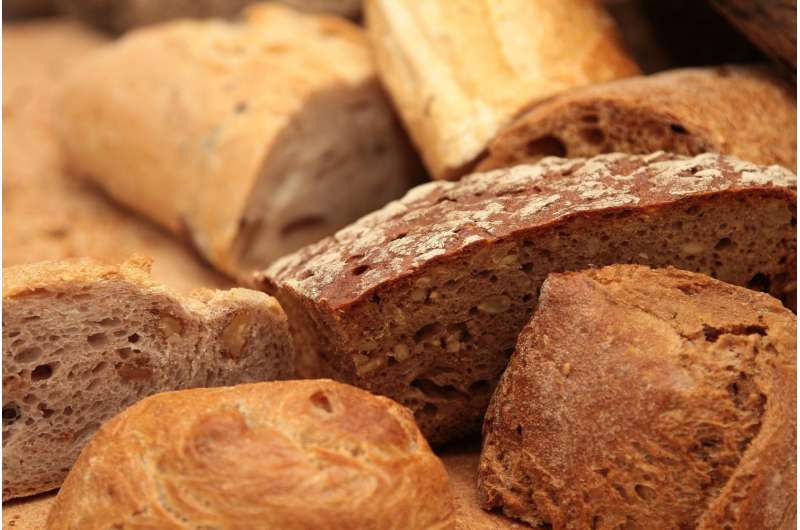Scientists bake gluten-free bread using a revolutionary technology

Electric shocks are used to heat gluten-free bread from the inside, saving energy and time compared to conventional baking applying heat from the outside. A recent study from the Institute of Food Technology of the University of Natural Resources and Life Sciences (BOKU), Vienna, was just published in Food and Bioprocess Technology. The researchers used a technology called Ohmic heating and adapted it to the production of gluten-free bread. First results show superior quality of the Ohmic bread while saving energy and time during the manufacturing process.
The principle is well known from the light bulb: An electrical current passing through a wire heats it up until it glows. This is due to its electrical resistance and the Ohmic law leading to the dissipation of electrical energy into heat. The resistance of bread dough results in the same effect—it doesn't glow like a wire, but heats up and bakes. The researchers used this smart solution to make gluten-free bread that is challenging to bake conventionally.
Hot flashes
"The heat is generated instantaneously within the complete dough," explains Prof. Henry Jäger. "This is the main advantage of the Ohmic heating technology. Conventional baking in the oven requires more time, since the heat needs to penetrate from the outside toward the center of the dough."
This slow heating is a major limitation for the manufacturing of gluten-free bread. Wheat protein, the gluten, which is usually responsible for the dough structure and its expansion, is missing in these products, so starch is substituted. Sufficient heating causes the starch to gelatinize and to contribute to the structure. However, a much larger portion of water is needed in the dough, which results in a lower viscosity and makes it thinner and more liquid. This is challenging for baking.
The team around Prof. Jäger realized that the rapid and uniform heating of the whole dough mass is one of the major advantages obtained from Ohmic heating, particularly benefiting the production of gluten-free bread. "In order to really benefit from these advantages and obtain best results, the optimal process and product characteristics had to be identified," says Prof. Jäger. "Achieving such convincing results and improving the efficiency of the process at the same time was also surprising for us."
Quality
The Ohmic bread showed excellent quality characteristics compared to conventionally baked products. The volume of the bread was 10 to 30 percent higher. The crumb was softer and more elastic, and the pores were smaller and more evenly distributed. But the team did not just rely on the physical characteristics of the bread, and looked also into nutritional aspects and digestibility.
"Taking into consideration the short baking time during Ohmic heating, a negative impact on starch digestibility might occur," says Prof. Regine Schönlechner, senior author of the study. However, tests performed by in-vitro methods did not reveal any differences.
The superior quality of the gluten free Ohmic bread was accompanied by savings of energy and time. The first trials indicate savings of around two-thirds compared to the energy needed for conventional baking. Also, the Ohmic baking needs much less time compared to conventional baking. In just a few minutes, the dough is converted into a ready-to-eat, gluten-free bread. Browning and crust formation do not occur, so the bread can be used directly for applications such as toast or tramezzini bread. If a crust is desired, it can be formed afterward in a controlled manner by infrared heating.
Special equipment from the BOKU Core Facility Food & Bio Processing was used by the team for the development and optimization of this promising baking concept. In this study, it was used to identify the exact conditions that result in major benefits from the Ohmic heating to the baking of gluten-free bread. This was achieved by performing trials applying different combinations of electrical power input and duration of different baking steps.
"At the end, the subsequent application of three different process intensities with different holding times proved to be the most suitable option," explains Prof. Jäger. "An initial baking step at two to six kiloWatts for 15 seconds followed by one kiloWatt for 10 seconds and a final baking at 0.3 kiloWatts for five minutes is the recipe for the successful production of gluten-free bread using Ohmic heating."
More information: Denisse Bender et al. Ohmic Heating—a Novel Approach for Gluten-Free Bread Baking, Food and Bioprocess Technology (2019). DOI: 10.1007/s11947-019-02324-9
Provided by Forschung & Bildung



















